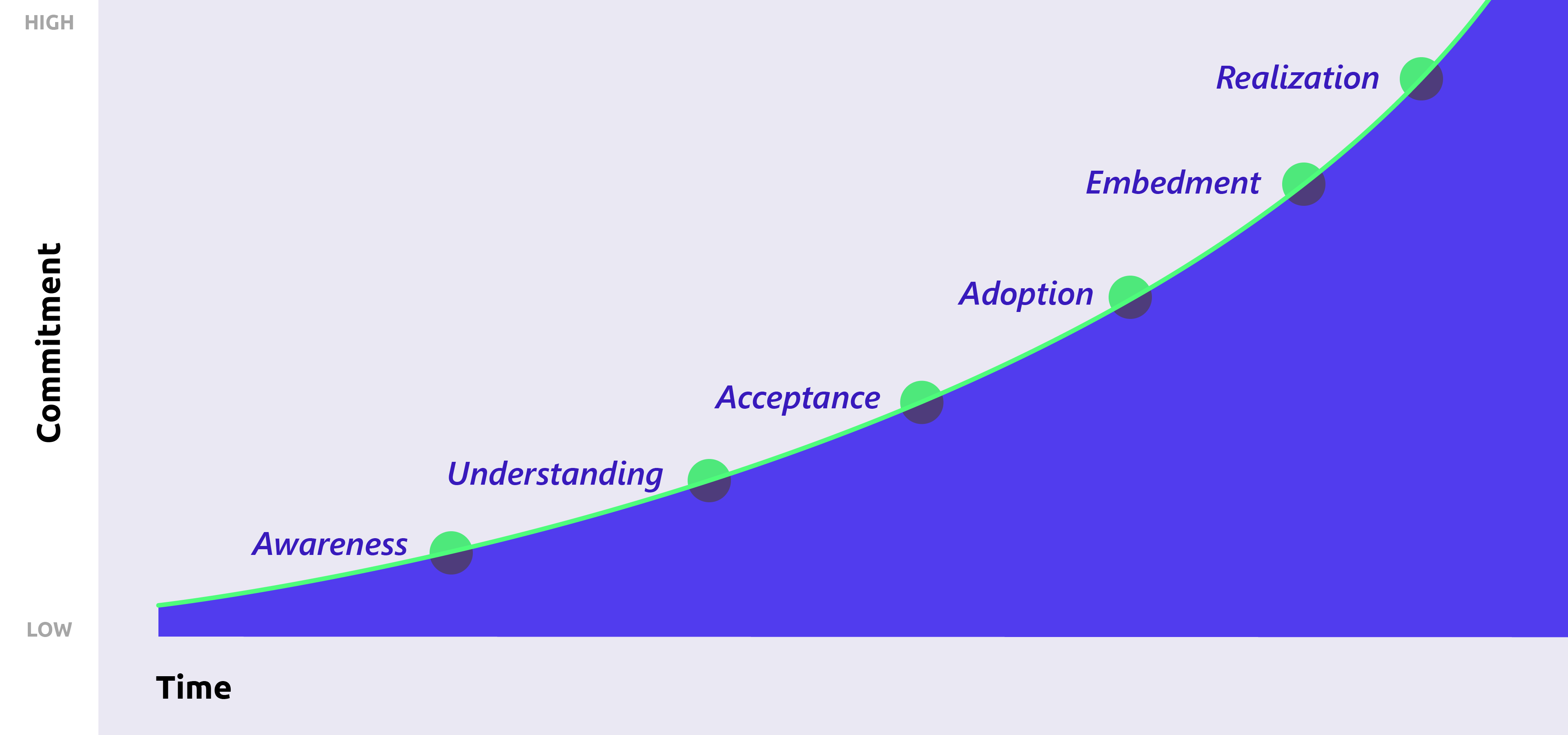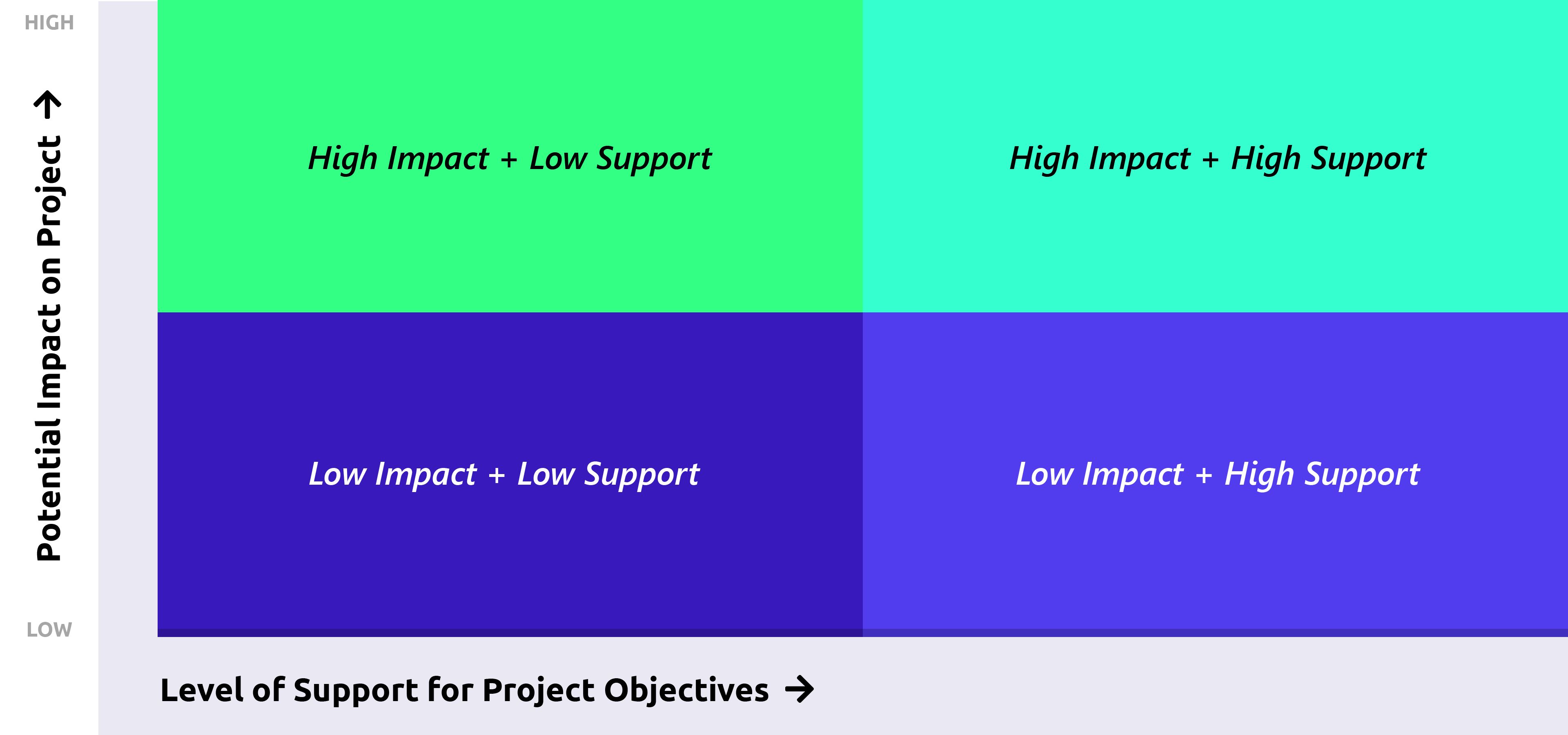Organizational change: This is how you keep all stakeholders informed and increase the success rate!
Estimated reading time: 6 minutes
Experts estimate that about 70 percent of all organizational changes fail. The cause might seem obvious: people don’t like change. Employees do not always contribute to change – in some cases, they even oppose the change. Therefore, failure oftentimes seems inevitable. In reality, there is definitely something you can do to greatly increase the success rate of your organizational change.
According to thought leader John P. Kotter, insufficient support for the change is one of the main reasons organizational change fails. There is a lack of ‘sponsorship’ within the organization. The sponsor, i.e., the initiator of the change, cannot bring about the change on their own. The sponsorship must flow through the organization like a waterfall. The sponsor’s views and ideas must be spread throughout each layer of the organization.
Sponsorship gap
In this process, the sponsor is dependent on leaders within the organization, such as department heads and managers. After all, they have short lines of communication with their team members and speak to their team daily. The leaders within the organization have a crucial role in informing everyone about the changes.

Organizational change will fail when a ‘sponsorship gap’ arises. The risk of a sponsorship gap increases when one or more leaders do not support the change. Leaders might become recalcitrant if they do not want to change their familiar way of working or if the change will put jobs in their department at risk.
These employees can become a bottleneck. They will not deliver the desired message to their team. They can do this deliberately, but they might also do it unconsciously. Whichever way it happens – if it happens, you might soon have to deal with an entire department that does not support the change and may even resist it. Failure seems to be just around the corner.
Up the commitment curve
An uninterrupted connection between the sponsor and all stakeholders (i.e., every individual affected by the change) is crucial to get employees involved in the change. They will have questions that need answering: what’s changing? Why do we have to change as an organization? Why should we adapt our familiar way of working? Only when employees are aware of the change and understand it, they can accept and adopt the organizational change. This is often described as the commitment curve.
Informing employees (to create awareness and understanding) is the very basis of any organizational change. Only when employees are informed, change will succeed. A ‘sponsorship gap’ undermines the initiated change at an early stage, hurling it towards failure.

However, you can prevent the emergence of a sponsorship gap. First, you can use an organizational scheme to identify which individuals play a key role within the organization. Depending on the kind of change, you might not need each department’s support – and therefore, the importance of a certain leader’s support may not be essential to implement the change successfully.
A Stakeholder Impact Assessment helps you identify priorities. Think carefully about what the organizational change means for each individual. What must employees change to make this particular organizational change successful? The Impact Assessment will give you insights into what it takes to involve each stakeholder in the change.
Keep control of the narrative
The next step is to develop a strong internal communication strategy. No change project is the same, so use the organizational schedule and Stakeholder Impact Assessment to define the right message for every individual. Determine which channels you should use to inform everyone within your organization based on your message.
Organizational change can have far-reaching consequences. These consequences will probably be different for everyone. A new business strategy may require production staff to work differently, while sales representatives will have to adapt their sales pitches. However, other departments could be less affected or maybe not even affected by the change at all. That is why personalization is crucial! If information resonates directly with each stakeholder, they will sooner be aware of the change. Additionally, they will better understand the change. All of this will lead to a bigger involvement and acceptance of the change.

If you use the right channels, you can get in direct contact with every stakeholder, which will make you less dependent on your organization’s leaders. With Netpresenter, you can send out messages through an omnichannel communication platform while still managing all content in one place. The platform allows you to send out messages through digital signage screens, workplace screensavers, and a company app, enabling you to use those channels to provide every department or division with a tailored message. In addition, interaction is an important element. Internal change communication is not just about broadcasting; it is also about receiving reactions. Are there any questions or concerns from employees? You can answer them directly in the company app or Microsoft Teams. This way, you will always stay in control of the narrative during the entire change process!
Internal communication is essential in the earliest stage of organizational change. It can make or break your change – so pay a lot of attention to your communication strategy from the very beginning. Is your organization facing a major change? Please contact our consultants to learn how Netpresenter can help you implement your change successfully! Or download free infographic about forces that make or break your organizational change.


